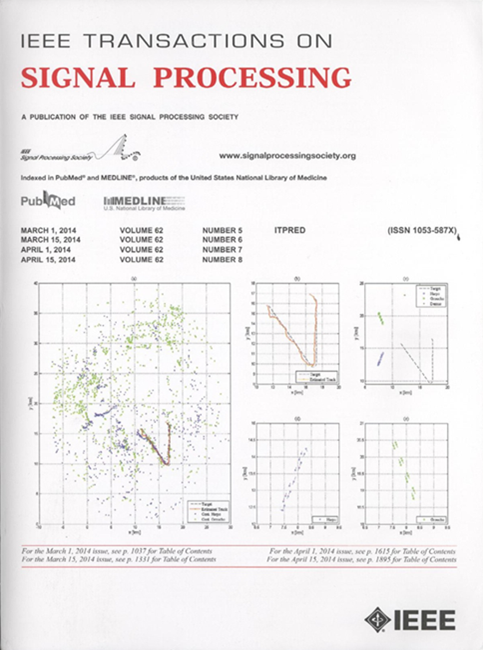Robust 3-D AOA Localization Based on Maximum Correntropy Criterion With Variable Center
IF 4.6
2区 工程技术
Q1 ENGINEERING, ELECTRICAL & ELECTRONIC
引用次数: 0
Abstract
This contribution investigates the problem of three-dimensional (3-D) angle-of-arrival (AOA) source localization (SL) in the presence of symmetric基于可变中心最大熵准则的鲁棒三维自动对地仪定位系统
本文研究了在存在对称稳定($\mathcal{S\alpha S}$)脉冲噪声($\alpha\in(0,2]$)时的三维(3-D)到达角(AOA)源定位(SL)问题。方位角和仰角测量值最初通过球面坐标转换改写成伪线性形式,从而使其更易于管理。随后,我们采用可变中心的最大熵准则(MCC-VC)设计出一种稳健的三维 AOA 位置估计器,该估计器无需事先了解控制 $\mathcal{S\alpha S}$ 噪声分布的冲动性和分散性的参数即可有效发挥作用。虽然它产生了一个直接的交替最小化算法框架,但我们的分析表明,仅仅采用 MCC-VC 会导致测量矩阵与噪声之间的相关性所产生的偏差问题。为了应对这一挑战,我们引入了工具变量(IV),开发了一种减少偏差的最大熵准则(MCC)估计器,称为带 IV 的 MCC(MCC-IV)。仿真结果表明,与现有方案相比,MCC-IV 在 3-D AOA SL 方面的性能有了显著提高,尤其是均方误差更接近 Cramér-Rao 下限,偏差大幅减少。
本文章由计算机程序翻译,如有差异,请以英文原文为准。
求助全文
约1分钟内获得全文
求助全文
来源期刊

IEEE Transactions on Signal Processing
工程技术-工程:电子与电气
CiteScore
11.20
自引率
9.30%
发文量
310
审稿时长
3.0 months
期刊介绍:
The IEEE Transactions on Signal Processing covers novel theory, algorithms, performance analyses and applications of techniques for the processing, understanding, learning, retrieval, mining, and extraction of information from signals. The term “signal” includes, among others, audio, video, speech, image, communication, geophysical, sonar, radar, medical and musical signals. Examples of topics of interest include, but are not limited to, information processing and the theory and application of filtering, coding, transmitting, estimating, detecting, analyzing, recognizing, synthesizing, recording, and reproducing signals.
 求助内容:
求助内容: 应助结果提醒方式:
应助结果提醒方式:


